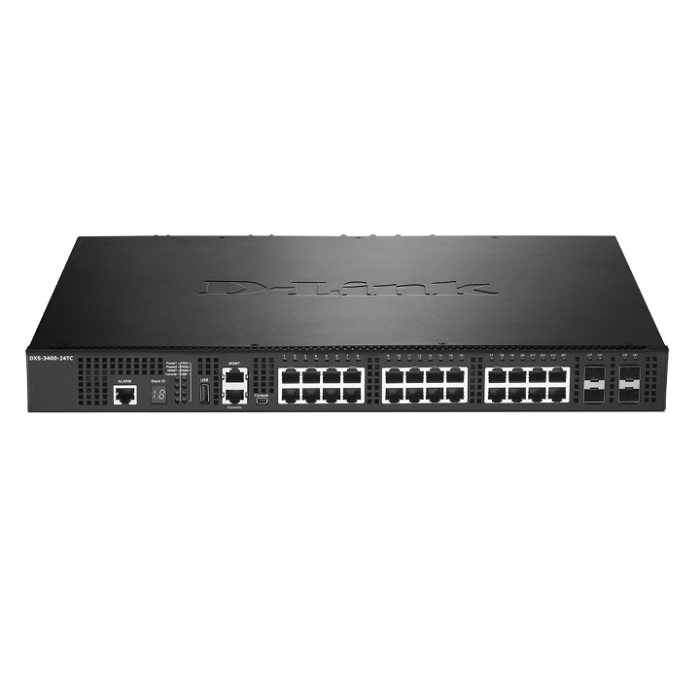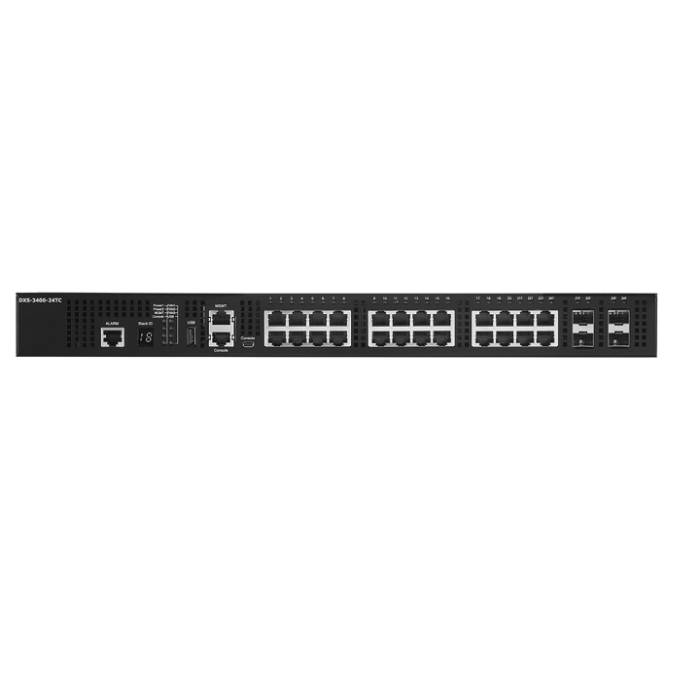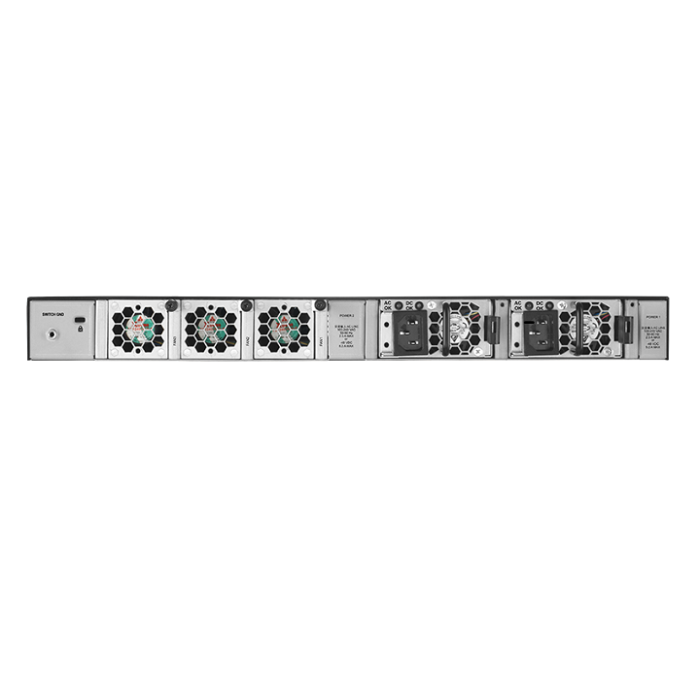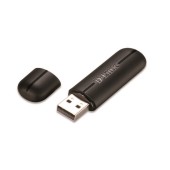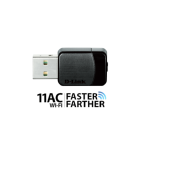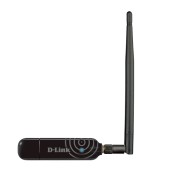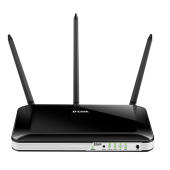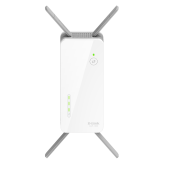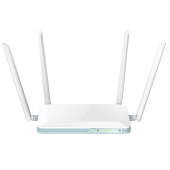D-Link DXS-3400-24TC 20-port 10GBASE-T and 4-port 10GBASE-T/SFP+ combo design L3 Managed Switch
D-Link DXS-3400-24TC 20-port 10GBASE-T and 4-port 10GBASE-T/SFP+ combo design L3 Managed Switch
SPECIFICATION
Interfaces
• 20-port 10GBASE-T and 4-port 10GBASE-T/SFP+ Combo Port
Console Port
• RJ45 and Mini USB console ports for out-of-band CLI management
Management Port
• 10/100/1000BASE-T RJ-45 Ethernet for out-of-band IP management
USB Port
• 1 port
Switching Capacity
• 480 Gbps
Max. Forwarding Rate
• 357.12 Mpps
Packet Buffer Memory
• 4 MB
MAC Address Table
• Up to 48K entries
Physical parameters
Power Input
• 100 to 240 V, 50/60 Hz, 2 A
Maximum Power Consumption
• 163.62 W
Standby Power Consumption
• 73.5 W
Heat Dissipation (Max.)
• 557.9442 BTU/hr
Dimensions (W x D x H)
• 441 x 44 x 380 mm
Weight
• 7.6 Kg (single PSU)
• 5.25 Kg (without PSU)
Operating Temperature
• -5 to 50 °C
Storage Temperature
• -40 to 70 °C
Operating Humidity
• 0% to 95% RH
Storage Humidity
• 0% to 95% RH
Safety
• cUL, CB, CE, CCC, BSMI
EMI/EMC
• CE, FCC, C-Tick, VCCI, BSMI, CCC
Stackability
• Physical Stacking
• Up to 80G stacking bandwidth
• Up to 4 switches in a stack
• Ring/chain topology support
• Virtual Stacking/Clustering of up to 32 units
• Supports D-Link Single IP Management
L2 Features
• MAC Address Table
• Up to 48K entries
• Flow Control
• 802.3x Flow Control when using Full Duplex
• Back Pressure when using Half Duplex
• HOL Blocking Prevention
• Spanning Tree Protocol
• 802.1D STP
• 802.1w RSTP
• 802.1s MSTP
• Root Guard
• Loop Guard
• Jumbo Frame
• Up to 12KB
• 802.1AX Link Aggregation
• Max. 32 groups per device, 8 ports per goup
• ERPS (Ethernet Ring Protection Switching)
• Port Mirroring
• Supports One-to-One, Many-to-One
• Supports Mirroring for Tx/Rx/Both
• Supports 4 mirroring groups
• Flow Mirroring
• Supports Mirroring for Rx
• VLAN Mirroring
• L2 Protocol Tunneling
L2 Multicast Features
• MLD Snooping
• MLD v1/v2 Snooping
• Supports 256 groups
• Host-based MLD Snooping Fast Leave
• Supports 64 static MLD groups
• MLD Snooping Querier
• Per VLAN MLD Snooping
• MLD Proxy Reporting
• IGMP Snooping
• IGMP v1/v2/v3 Snooping
• Supports 256 IGMP groups
• Supports 64 static IGMP groups
• IGMP per VLAN
• IGMP Snooping Querier
• Host-based IGMP Snooping Fast Leave
• PIM Snooping
L3 Features
• ARP
• 512 Static ARP
• Supports Gratuitous ARP
• IP Interface
• Supports 256 interfaces
• Loopback Interface
• IPv6 Tunneling
• Static
• ISATAP
• GRE
• 6to4
• IGMP Proxy Reporting
• VRRP v2/v3
L3 Routing
• Static Routing
• Max. 256 IPv4 entries
• Max. 128 IPv6 entries
• Supports route redistribution
• Supports secondary route
• Default Routing
• Policy-based Route (PBR)
• Route Redistribution
• Supports 512 hardware routing entries shared by IPv4/IPv6
• Max. 512 IPv4 entries
• Max. 256 IPv6 entries
• Supports 32K hardware L3 forwarding entries shared by IPv4/IPv6
• Max. 32K IPv4 entries
• Max. 16K IPv6 entries
• RIP
• RIP v1/v2
• RIPng 2
VLAN
• 802.1Q
• 802.1v
• Double VLAN (Q-in-Q)
• Port-based Q-in-Q
• Selective Q-in-Q
• Port-based VLAN
• MAC-based VLAN
• Subnet-based VLAN
• Private VLAN
• VLAN Group
• Max. 4K static VLAN groups
• Max. 4094 VIDs
• ISM VLAN (Multicast VLAN)
• Voice VLAN
• Auto Surveilliance VLAN
• VLAN Trunking
• GVRP
• Up to 255 dynamic VLANs
AAA
• 802.1X Authentication
• Supports Port-based access control
• Supports Host-based access control
• Identity-driven Policy Assignment
• Dynamic VLAN Assignment
• QoS Assignment
• ACL Assignment
• Web-based Access Control (WAC)
• Identity-driven Policy Assignment
• Dynamic VLAN Assignment
• QoS Assignment
• ACL Assignment
• MAC-based Access Control (MAC)
• Identity-driven Policy Assignment
• Dynamic VLAN Assignment
• QoS Assignment
• ACL Assignment
• Compound Authentication
• Microsoft NAP
• Support 802.1X NAP
• Support DHCP NAP
• RAIDUS and TACACS+ Authentication
• Authentication Database Failover
• Guest VLAN
Quality of Service (QoS)
• 802.1p Quality of Service
• 8 queues per port
• Queue Handling
• Strict
• Weighted Round Robin (WRR)
• Strict + WRR
• Deficit Round Robin (DRR)
• Weighted Deficit Round Robin (WDRR)
• Bandwidth Control
• Port-based (Ingress/Egress, min. granularity 64 Kb/s)
• Flow-based (Ingress/Egress, min. granularity 64 Kb/s)
• Per queue bandwidth control (min. granularity 64 Kb/s)
• Support for following actions:
• Remark 802.1p priority tag
• Remark TOS/DSCP tag
• Bandwidth Control
• Committed Information Rate (CIR)
• QoS based on
• 802.1p Priority Queues
• DSCP
• IP address
• MAC address
• VLAN
• IPv6 Traffic Class
• IPv6 Flow Label
• TCP/UDP port
• Switch Port
• Ether Type
• ToS/IP Preference
• Protocol Type
• Three Color Marker
• trTCM
• srTCM
• Congestion Control
• WRED
Data Center Bridging (DCB)
• 802.1Qbb Priority-based Flow Control (PFC)
• 802.1Qaz Enhanced Transmission Selection (ETS)
• 802.1Qau Congestion Notification (CN)
Access Control List (ACL)
• ACL based on:
• 802.1p priority
• VLAN
• MAC address
• EtherType
• IP address
• DSCP
• Protocol type
• TCP/UDP port number
• IPv6 Traffic Class
• IPv6 Flow Label
• Max. ACL entries:
• Ingress
• IPv4: 1792
• IPv6: 448
• Egress
• IPv4: 512
• IPv6: 256
• 3K VLAN access map
• Time-based ACL
Security
• Port Security
• Supports up to 12K MAC addresses per port/system
• Broadcast/Multicast/Unicast Storm Control
• D-Link Safeguard Engine
• DHCP Server Screening
• IP-MAC-Port Binding
• Dynamic ARP Inspection
• IP Source Guard
• DHCP Snooping
• IPv6 Snooping
• DHCPv6 Guard
• IPv6 Route Advertisement (RA) Guard
• IPv6 ND Inspection
• ARP Spoofing Prevention
• Max. 64 entries
• Duplicate Address Detection (DAD)
• L3 Control Packet Filtering 2
• Unicast Reverse Path Forwarding (URPF)
• Traffic Segmentation
• SSL
• Supports v1/v2/v3
• Supports IPv4/v6 access
• SSH
• Supports SSH v2
• Supports IPv4/v6 access
• BPDU Attack Prevention
• DOS Attack Prevention
Operations, Administration, and Maintenance
• Cable Diagnostics
• 802.3ah Ethernet Link OAM
• D-Link Unidirectional Link Detection (DULD)
• Dying Gasp
• 802.1ag Connectivity Fault Management (CFM)
• Y.1731 OAM
• Optical Transceiver Digital Diagnostic Monitoring (DDM)
Management
• Web-based GUI
• CLI
• Telnet
• TFTP Server
• TFTP Client
• FTP Client
• Secure FTP (SFTP) Server
• Traffic Monitoring
• SNMP
• Supports v1/v2c/v3
• SNMP Trap
• System Log
• DHCP Client
• DHCP Server
• DHCP Relay options 60, 61, 82
• Multiple Image
• Multiple Configuration
• Flash File System
• DNS Client
• CPU Monitoring
• MTU Setting
• ICMP Tools
• Ping
• Traceroute
• LLDP & LLDP-MED
• DNS Relay
• SMTP
• DHCP Auto Configuration
• NTP
• RCP (Remote Copy Protocol)
• RMONv1
• RMONv2
• Trusted Host
• Password Encryption
• Debug Command
• sFlow
• Switch Resource Management (SRM)
• Microsoft Network Load Balancing (NLB) 2
• Openflow v1.3
Standards
MIB & RFC Standards
• MIB Structure: RFC1065, RFC1066, RFC1155, RFC1156, RFC2578
• Concise MIB Definitions: RFC1212
• MIBII: RFC1213
• MIB Traps Convention: RFC1215
• Bridge MIB: RFC1493, RFC4188
• SNMP MIB: RFC1157, RFC2571, RFC2572, RFC2573, RFC2574, RFC2575, RFC2576
• SNMPv2 MIB: RFC1442, RFC1901, RFC1902, RFC1903, RFC1904, RFC1905, RFC1906, RFC1907, RFC1908, RFC2578, RFC3418, RFC3636
• RMON MIB: RFC271, RFC1757, RFC2819
• RMONv2 MIB: RFC2021
• Ether-like MIB: RFC1398, RFC1643, RFC1650, RFC2358, RFC2665, RFC3635
• 802.3 MAU MIB: RFC2668
• 802.1p MIB: RFC2674, RFC4363
• Interface Group MIB: RFC2863
• RADIUS Authentication Client MIB: RFC2618
• MIB for TCP: RFC4022
• MIB for UDP: RFC4113
• MIB for Diffserv.: RFC3298
• RADIUS Accounting Client MIB: RFC2620
• Ping & TRACEROUTE MIB: RFC2925
• Running configuration writes and backup (D-Link MIB)
• TFTP uploads and downloads (D-Link MIB)
• Trap MIB (D-Link MIB)
• IPv6 MIB: RFC2465
• ICMPv6 MIB: RFC2466
• Entity MIB: RFC2737
• VRRP MIB: RFC2787
• RIPv2 MIB: RFC1724
• OSPF MIB: RFC1850
• IPv4 Multicast Routing MIB: RFC5132, RFC2932
• PIM MIB for IPv4: RFC2934
• IP Forwarding Table MIB: RFC4292
• IPv6 SNMP Mgmt Interface MIB: RFC4293
• DDM MIB (D-Link MIB)
• Private MIB (D-Link MIB)
• DIFFSERV MIB (D-Link MIB)
• MIB for D-Link Zone Defense (D-Link MIB)
• IP: RFC791
• UDP: RFC768
• TCP: RFC793
• ICMPv4: RFC792
• ICMPv6: RFC2463, RFC4443
• Extended ICMP to Support Multi-Part Messages: RFC4884
• ARP: RFC826
• CIDR: RFC1338, RFC1519
• Definition of the DS Field in the IPv4 and IPv6 Headers: RFC2474, RFC3168, RFC3260
• Extensible Authentication Protocol (EAP): RFC1321, RFC2284, RFC2865, RFC2716, RFC1759, RFC3580, RFC3748
• SNMP Framework: RFC2571
• SNMP Message Processing and Dispatching: RFC2572
• SNMP Applications: RFC2573
Related Product
Upgrade to Wireless AC Performance
Today's households are connecting more devices than ever before – with more and more iPhones, Androids, tablets, and laptops laying around in any given home, it's important that each device gets the speed and coverage it deserves.
By upgrading your laptop and desktop computers to Wireless AC, you can immediately enjoy the benefits of faster wireless speeds and better connectivity. Delivering Wi-Fi dual band speeds to your laptop or desktop computer, the DWA-171 is the perfect solution for those looking to enjoy smooth HD video streaming, fast file transfers and lag-free video chatting – all with less wireless interference for maximum performance.
Backward Compatible
While the Wireless AC Dual Band USB Adapter delivers blazing fast AC speed to your laptop or desktop computer, it’s also backward compatible with older Wi-Fi routers and devices – no updates or adapters necessary.
Maximize your AC Performance
While your new Wireless AC adapter delivers the latest and the greatest in wireless performance to your laptop and desktop computers, you can further optimize your home network's performance by upgrading your current router to one of D-Link’s Wireless AC Cloud routers. By adding an Wi-Fi AC router to your home network (DIR-810L, DIR-820L), you can avoid speed bottle-necks and maximize your wireless AC performance
..

